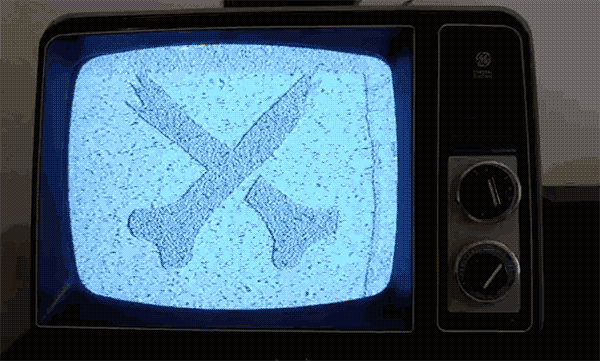Last week, I posted a short video on Twitter showing my black & white TV hooked to a first-generation Roku player. I cycled through Netflix and played the intro to The Twilight Zone. I didn't think much of it but it really took off on Twitter, generating 70,000 likes and over 16,000 retweets. People seemed to be impressed that an old television was capable of playing modern streaming video.
I've tried to do this in the past but my previous attempts didn't work out so great. The TVs that I dragged home ended up being broken and I'm definitely not skilled at repairing electronics. It all came together when I happened upon a nice General Electric XB2410SD and the Roku at the thrift store. I had all the converters and cables waiting in a drawer to try again, and it worked!
For my set up, I connected the TV to an RCA RF modulator using a matching transformer. I know that sounds like Star Trek speak, but it just means that I made the TV's antenna into a plug-in-able thing. Then, I plugged the Roku into that adapter with composite(red, white, yellow) cables. Then, when I set the TV to channel 3, the signal comes through to the television through the antenna port. That's it!
The old Roku has composite AV and HDMI outputs. Most modern media players have HDMI outputs only, so you might need an HDMI to Composite AV converter. With the converter, I was able to connect the TV to an Apple TV, my Macbook, and other devices for even more experiments.
Here’s a list of parts to hook an old TV to an HDMI media player:
75 Ohm to 300 Ohm UHF/VHF / FM Matching Transformer
https://www.amazon.com/300-Ohm-UHF-Matching-Transformer/dp/B0002ZPIOG
A short length of coaxial cable (thrift stores always have a bin full of these)
Composite AV cable (red, white, yellow)
HDMI cable (usually included with media players
RF Modulator
https://www.amazon.com/RCA-Compact-RF-Modulator-CRF907A/dp/B0014KKV7W/
HMDI to Composite Converter
https://www.amazon.com/VILCOME-Composite-Converter-Adapter-Supports/dp/B07CXT1LBP
I plugged my black and white tv into an old Roku. pic.twitter.com/YHDiUiGXD6
— Ellingson (@ellingson) June 19, 2019
Here’s a simple image of my set-up. Click to embiggen.
If you’re thinking of doing something like this, I recommend checking local second-hand shops for televisions before looking at ebay. Shipping costs for TVs are always expensive and there's no guarantee that the set will work when it arrives. If the TV doesn't have a coaxial cable port on the back (the threaded post that cable screws in to), it probably has little screws that the antenna connects to. Those little screws are your magic doorway into the television. You'll have to connect a "matching transformer" to the screw posts and then a coaxial cable to the other end of the transformer. The coaxial cable can either plug into a cable box or a converter to accept other forms of audio/video. In my set up, the coaxial cable goes into an RF modulator that allows me to plug in composite AV cables. Those are the red, white, and yellow cables common to many stereo and video components.
Next, you'll need something to send video to the old TV. It could be a Blu-Ray player, your cable box, a game console, or whatever. I recommend using something that has the option of outputting to a 4:3 aspect ratio, otherwise the old TV will squish the picture to fit.
For me, the results were surprisingly good! All kinds of video looks great on my black and white TV. There's something about the luminescence of a cathode ray tube picture that's totally unique. The white really glows. It actually makes it hard to capture video of the TV with my phone because it's like filming a neon sign. Also, the sound isn't great, so I have that cable running from the adapter to my stereo. When I initially set it up, I just had it hooked to the old Roku. That works okay except that Netflix is the only app that seems to still be supported on first generation Rokus. Usually, I leave the TV connected to my cable box and that's just fine for me. I recently ordered an HDMI adapter, so I've also tried things like hooking it up to Apple TV and sending my iPad screen to it using AirPlay. It works! Playing iOS games like Alto's Adventure and LIMBO are really fun on the old TV.
Below are some the results of my TV experiments. You can follow along by visiting my Instagram account.

